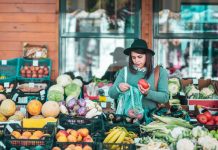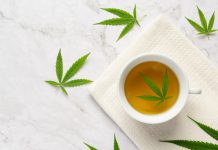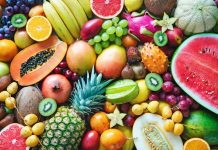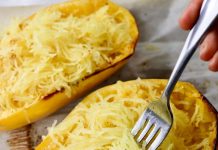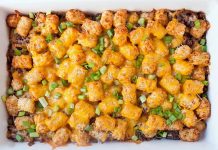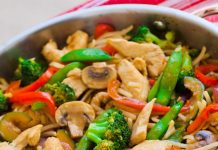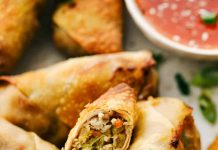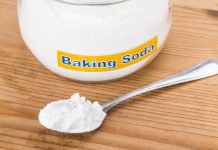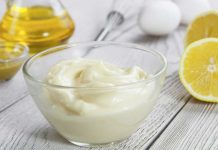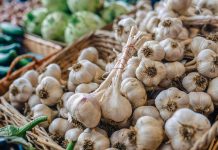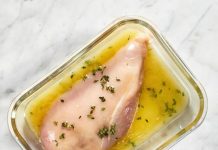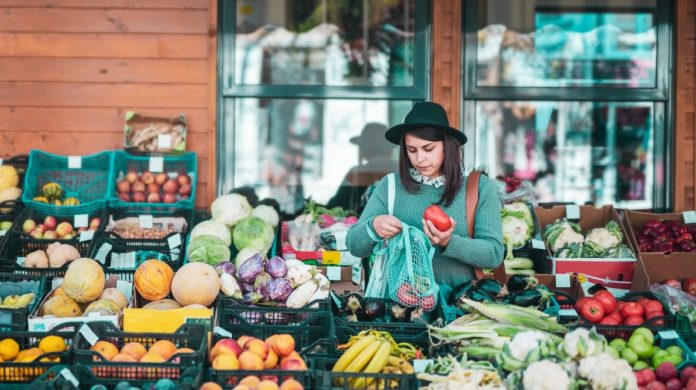Summary
iber is a fundamental piece of a fortifying eating regimen, however a great many people in the U.S. try not to meet the suggested day by day fiber consumption.
A high-fiber diet assists with forestalling clogging, keep up with heart wellbeing, and feed the great microscopic organisms in the gut. It can likewise assist with weight reduction.
Individuals can build the measure of fiber they get from their eating regimen by picking high-fiber food varieties and following certain dietary tips, like not stripping off consumable skins on products of the soil.
Food sources that are normally wealthy in fiber have numerous other medical advantages, as well. Eating a wide assortment of entire food sources will assist individuals with meeting their every day needs for fiber and other key supplements.
At the point when an individual remembers high-fiber food varieties for their eating regimen, it has many advantages, for example, keeping the gut solid, boosting heart wellbeing, and advancing weight reduction.
As indicated by the most exceptional Dietary Guidelines for AmericansTrusted Source, the sufficient admission (AI) of fiber for grown-up men is 33.6 grams (g) each day, and 28 g for grown-up ladies.
Yet, a great many people in America don’t meet this objective. The normal fiber consumption in the United States is 17 g, and just 5% of individuals meet the sufficient day by day admission.
Individuals need to get both dissolvable and insoluble fiber from their eating routine. Eating a differed high-fiber diet implies getting a lot of natural products, vegetables, vegetables, and entire grains.
In this article, we give a rundown of 38 restorative, high-fiber food sources — clarifying how much fiber every one has — to assist individuals with boosting their day by day fiber admission.
High-fiber legumes
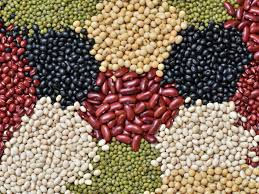
Legumes are fiber-rich plant-based foods that include beans, lentils, and peas.
Beans are a good source of fermentable fibers. This fiber moves into the large intestine and helps to feed the diverse colony of healthy bacteria in the gut.
Researchers have found connectionsTrusted Source between a healthy gut microbiome and lower rates of obesity and type 2 diabetes.
The following are some of the best legumes for fiber:
1. Navy beans
Navy beans are one of the richest sources of fiber. They are also high in protein. Add navy beans to salads, curries, or stews for an extra fiber and protein boost.
Fiber content: Navy beans contain 10.5 g per 100 gTrusted Source (31.3 percent of AI).
2. Pinto Beans
Pinto beans are a popular U.S. staple. People can eat pinto beans whole, mashed or as refried beans. Along with their high-fiber content, pinto beans are a great source of calcium and iron.
Fiber content: Pinto beans contain 9 g of fiber per 100 gTrusted Source (26.8 percent of AI).
3. Black beans
Black beans contain good amounts of iron and magnesium. They are also a great source of plant-based protein.
If people who follow a vegan diet combine black beans with rice, they will be getting all nine essential amino acids.
Fiber content: Black beans contain 8.7 g of fiber per 100 gTrusted Source (25.9 percent of AI).
4. Split peas
Split peas are a great source of iron and magnesium. They go well in casseroles, curries, and dahl.
Fiber content: Split peas contain 8.3 g of fiber per 100 gTrusted Source (24.7 percent of AI).
5. Lentils
There are many types of lentils, including red lentils and French lentils. They make a great addition to couscous, quinoa dishes, or dahl.
Fiber content: Lentils contain 7.9 g of fiber per 100 gTrusted Source (23.5 percent of AI).
6. Mung beans
Mung beans are a versatile source of potassium, magnesium, and vitamin B-6.
When dried and ground, people can use mung bean flour to make pancakes.
Fiber content: Mung beans contain 7.6 g of fiber per 100 gTrusted Source (22.6 percent of AI).
7. Adzuki beans
Adzuki beans are used in Japanese cuisine to make red bean paste, which is a traditional sweet. People can also boil these fragrant, nutty beans and eat them plain.
Fiber content: Adzuki beans contain 7.3 g of fiber per 100 gTrusted Source (21.7 percent of AI).
8. Lima Beans
Not only are lima beans a great source of fiber, but they are also high in plant protein.
Fiber content: Lima beans contain 7 g of fiber per 100 gTrusted Source (20.8 percent of AI).
9. Chickpeas
Chickpeas, or garbanzo beans, are a popular source of plant-based protein and fiber. They are also full of iron, vitamin B-6, and magnesium.
Use this legume as a base for hummus and falafel.
Fiber content: Chickpeas contain 6.4 g of fiber per 100 gTrusted Source (19 percent of AI).
10. Kidney Beans
Kidney beans are a rich source of iron. Kidney beans are a great addition to chili, casseroles, and salads.
Fiber content: Kidney beans contain 6.4 g of fiber per 100 gTrusted Source (19 percent of AI).
11. Soybeans
Soybeans are used to make a variety of products, such as tofu, tempeh, and miso. People often use soybean products as dietary replacements for meat and dairy.
Fresh soybeans can also be eaten raw or added to salads as edamame.
Fiber content: Soybeans contain 6 g of fiber per 100 gTrusted Source (17.9 percent of AI).
12. Baked beans
Baked beans are rich in fiber and protein. They are available from most grocery stores. Try to buy brands with reduced sugar and salt to get more health benefits.
Fiber content: Plain baked beans from a can contain 4.1 g of fiber per 100 gTrusted Source (12.2 percent of AI).
13. Green peas
Green peas are available canned or fresh. Green peas are a great source of fiber, protein, vitamin C, and vitamin A.
Fiber content: Green peas contain 4.1–5.5 g of fiber per 100 gTrusted Source (12–16 percent of AI).
High-fiber vegetables
Among the many health benefits of vegetables, they are a great source of dietary fiber. Vegetables with a high-fiber content include:
14. Artichoke

Artichokes are packed with vitamins C and K, plus calcium, and folate.
Grill, bake, or steam whole artichokes and use in dishes or as a side.
People often prepare just the artichoke heart above the outside leaves.
Fiber content: One medium artichoke contains 6.9 g of fiberTrusted Source (20.5 percent of AI).
15. Potato
As a staple vegetable, potatoes are a good source of B vitamins plus vitamin C and magnesium.
Fiber content: One large potato, baked in its skin, contains 6.3 g of fiberTrusted Source (18.8 percent of AI).
16. Sweet potato
Sweet potatoes are one of the starchy vegetables. They are high in vitamin A.
Fiber content: One large sweet potato, baked in its skin, contains 5.9 g of fiberTrusted Source (17.6 percent of AI).
17. Parsnips
Parsnips are a good source of vitamins C and K, as well as B vitamins, calcium, and zinc.
Fiber content: One boiled parsnip contains 5.8 g of fiberTrusted Source (17.3 percent of AI).
18. Winter squash
Winter squash vegetables are a bountiful source of vitamins A and C.
Fiber content: One cup of winter squash contains 5.7 g of fiberTrusted Source (17 percent of AI).
19. Broccoli
Broccoli is a cruciferous vegetable that is high in vitamins C and A. Cruciferous vegetables also have lots of antioxidant polyphenols.
Fiber content: One cup of cooked broccoli florets contains 5.1 g of fiberTrusted Source (15.2 percent of AI).
20. Pumpkin
Pumpkin is a popular vegetable and source of vitamins A and K and calcium. People use it in sweet and savory dishes.
Fiber content: A standard portion of canned pumpkin contains 3.6 g of fiberTrusted Source (10.7 percent of AI).
High-fiber fruit
People can boost their daily fiber intake by including healthful fruits as a snack between meals. Some fruits contain more fiber than others.
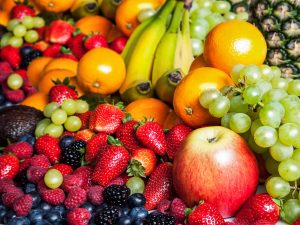
21. Avocado
Avocado is full of healthful monounsaturated fats that are beneficial to heart health. They are popular in salads and for making dips.
Fiber content: One peeled avocado contains 9.2 g of fiberTrusted Source (27.4 percent of AI).
22. Pear
Pears are full of fiber, as well as vitamins C and A, folate and calcium. Keep a few pears in the fruit bowl, or serve them with dessert.
Fiber content: One medium pear contains 5.5 g of fiberTrusted Source (16.4 percent of AI).
23. Apple
Apples are a good source of vitamins C and A and folate. Make sure to eat the skin as well as the apple flesh, as the skin contains much of the fruit’s fiber.
Fiber content: One large apple contains 5.4 g of fiberTrusted Source (16.1 percent of AI).
24. Raspberries
Raspberries are a great source of antioxidants. These ruby-red berries also contain vitamins C and K.
Fiber content: Half a cup of raspberries contains 4 g of fiberTrusted Source (11.9 percent of AI).
25. Blackberries
Similarly to raspberries, blackberries are full of healthful antioxidants and are a great source of vitamins C and K.
Fiber content: Half a cup of blackberries contains 3.8 g of fiberTrusted Source (11.3 percent of AI).
26. Prunes
Prunes, or dried plums, can help promote digestive health. Although high in fiber, prunes can also be high in sugar, so eat these in moderation.
Fiber content: Five prunes contain 3.4 g of fiberTrusted Source (10.1 percent of AI).
27. Orange
Oranges are surprisingly a good source of fiber. Oranges are full of vitamin C, which is essential for health.
Fiber content: One orange contains 3.4 g of fiberTrusted Source (10.1 percent of AI).
28. Banana
Bananas are a great source of nutrients, including potassium, magnesium, and vitamin C. They can be included in baking or eaten on their own as a snack.
Fiber content: One medium banana contains 3.1 g of fiberTrusted Source (9.2 percent of AI).
29. Guava
Not only is this tropical fruit a source of fiber, but it also has a very high amount of vitamin C and contains vitamin A.
Try guava in smoothies or juices. The rinds are edible, which means they can make a great fruit snack when on the go.
Fiber content: One guava fruit contains 3 g of fiberTrusted Source (8.9 percent of AI).
Nuts and seeds provide numerous health benefits. They contain healthful fats, high concentrations of protein, and they often have essential omega-3 fatty acids.
High-fiber nuts and seeds include:
30. Buckwheat

Despite its name, buckwheat is a seed and not a grain.
Buckwheat groats are grain-like seeds from a plant that is more closely related to rhubarb than wheat. It is rich in magnesium and zinc. Buckwheat does not contain gluten.
People traditionally use buckwheat in Japan for making soba noodles. It has also gained popularity in other countries.
People can add the groats to breakfast cereal or smoothies.
Buckwheat flour is an excellent gluten-free alternative to plain flour for baking and cooking.
Fiber content: Half a cup of buckwheat groats contains 8.4 g of fiberTrusted Source (25 percent of AI).
31. Chia seeds
People originally cultivated chia seeds in Central America. Not only are these edible seeds high in fiber, but they also contain high levels of omega-3s, protein, antioxidants, calcium, and iron.
People may get more health benefits from ground chia seeds. Buy them ground up or blitz the seeds into a fine powder, using a food processor or mortar and pestle.
Fiber content: Each tablespoon of chia seeds contains 4.1g of fiberTrusted Source (12.2 percent of AI).
32. Quinoa
Quinoa is another pseudocereal and is also an edible seed.
This seed is high in antioxidants, magnesium, folate, and copper, as well as vitamins B-1, B-2, and B-6.
Quinoa is useful for people who are sensitive to gluten. Quinoa flour is excellent for baking, and people often include the flakes in breakfast cereals.
Fiber content: Half a cup of quinoa contains 2.6 g of fiberTrusted Source (7.7 percent of AI).
33. Pumpkin seeds
Pumpkin seeds are a brilliant source of healthful monounsaturated and polyunsaturated fats, as well as magnesium, and zinc.
Fiber content: A quarter cup of pumpkin seeds contains 1.9 g of fiberTrusted Source (5.7 percent of AI).
34. Almonds
Almonds are high in vitamin E, which acts as an antioxidant, as well as calcium and healthful, monounsaturated and polyunsaturated fatty acids.
Fiber content: Ten almonds contain 1.5 g of fiberTrusted Source (4.5 percent of AI).
35. Popcorn
Popcorn is a healthful, whole food snack. It is a source of zinc, folate, and vitamin A. Avoid popcorn brands high in sugar and salt.
Fiber content: One cup of popcorn contains 1.2 g of fiberTrusted Source (3.6 percent of AI).








